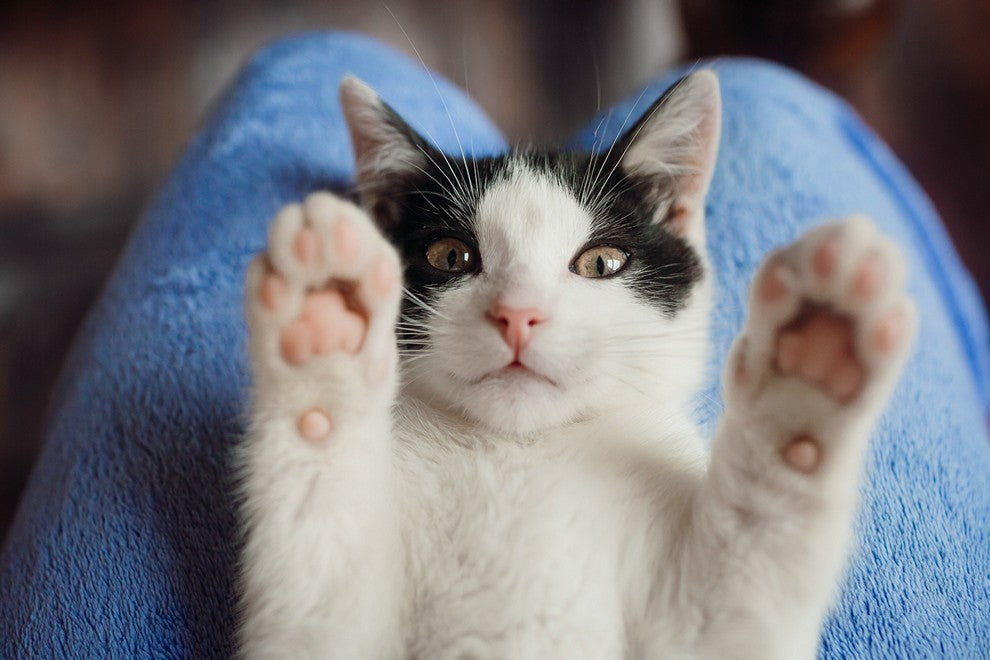In this Article
Cats are sensitive creatures, finely tuned to their environment. While they may appear independent and relaxed, they are also prone to stress, which often goes unnoticed by their owners. Stress in cats is not just an emotional state — it can affect their physical health, leading to behavioral changes and even medical problems. Understanding the signs of feline stress and knowing how to reduce it is essential for every cat parent.
This article explores what stress in cats looks like, the most common causes, practical strategies for creating a calm environment, and tips for long-term well-being.
Understanding Feline Stress
Stress in cats is the body’s response to something perceived as threatening or overwhelming. Unlike humans, cats can’t communicate their feelings verbally — instead, they show stress through subtle behavioral and physical signs.
Common Signs of Stress in Cats
- Excessive hiding or withdrawal from family members
- Overgrooming or fur loss in specific areas
- Changes in eating habits — overeating or loss of appetite
-
Inappropriate elimination outside the litter box
- Increased aggression toward people or other pets
- Excessive meowing or unusual vocalization
- Pacing or restlessness
- Frequent scratching of furniture or walls
- Digestive issues such as vomiting or diarrhea
If left unaddressed, chronic stress can weaken the immune system, leading to recurring illnesses like urinary tract infections or gastrointestinal problems.
Causes of Stress in Cats
Stress can be triggered by changes in a cat’s environment, daily routine, or social interactions. Common causes include:
- Environmental changes: Moving homes, new furniture, or loud noises.
- Social stress: Introduction of a new pet or family member, tension with other cats.
- Boredom and lack of stimulation: Not enough opportunities for climbing, scratching, or playing.
- Territorial issues: Confined spaces or lack of safe hiding spots.
- Health problems: Undiagnosed pain or illness often shows first as stress-related behavior.
Recognizing the root cause is the first step to helping your cat regain balance.
How to Reduce Stress in Cats
Reducing stress is about creating a safe, predictable, and stimulating environment. Here are effective strategies:
1. Provide Safe Spaces
Cats feel secure when they can observe from above or hide when needed. Wall-mounted shelves, perches, or tunnels offer vertical territory that reduces conflict and increases confidence. Cozy hiding spots, like covered beds, give them a place to retreat during stressful situations.
2. Maintain a Consistent Routine
Cats thrive on predictability. Feeding, playtime, and cleaning the litter box at the same times each day help reduce anxiety. Sudden changes in routine should be minimized.
3. Enrich the Environment
Interactive toys, puzzle feeders, and climbing complexes stimulate natural hunting and exploring instincts. A stimulating environment reduces boredom-related stress and keeps cats mentally engaged.
4. Encourage Play and Exercise
Play relieves tension and mimics hunting behavior. Wand toys, laser pointers, or chase games help release energy and reduce frustration.
5. Reduce Triggers
If your cat is stressed by loud noises, provide quiet spaces away from windows or use calming music. For multi-cat households, ensure each cat has its own resources: litter boxes, bowls, and sleeping areas.
6. Use Calming Aids
Pheromone diffusers, sprays, or natural supplements may help reduce stress in particularly anxious cats. Always consult with a veterinarian before introducing supplements.
Long-Term Strategies for a Calm Cat
- Regular veterinary checkups: Rule out medical issues that may mimic stress.
- Gradual introductions: When bringing in a new pet or person, introduce slowly and with positive reinforcement.
- Respect personal space: Allow your cat to choose when and how to interact.
- Vertical territory: Investing in wall-mounted complexes provides long-term enrichment and reduces territorial disputes.
Conclusion
Stress in cats is a serious issue that can affect both behavior and health. By learning to recognize the signs and addressing the underlying causes, cat parents can create a secure and enriching environment. From safe spaces and consistent routines to interactive play and vertical wall complexes, small adjustments can significantly improve a cat’s emotional well-being.
A calm cat is a happy cat — and a happy cat makes for a more harmonious home. If you’re looking for ways to enrich your cat’s environment, explore our wall-mounted cat furniture designed to provide comfort, stimulation, and security.


